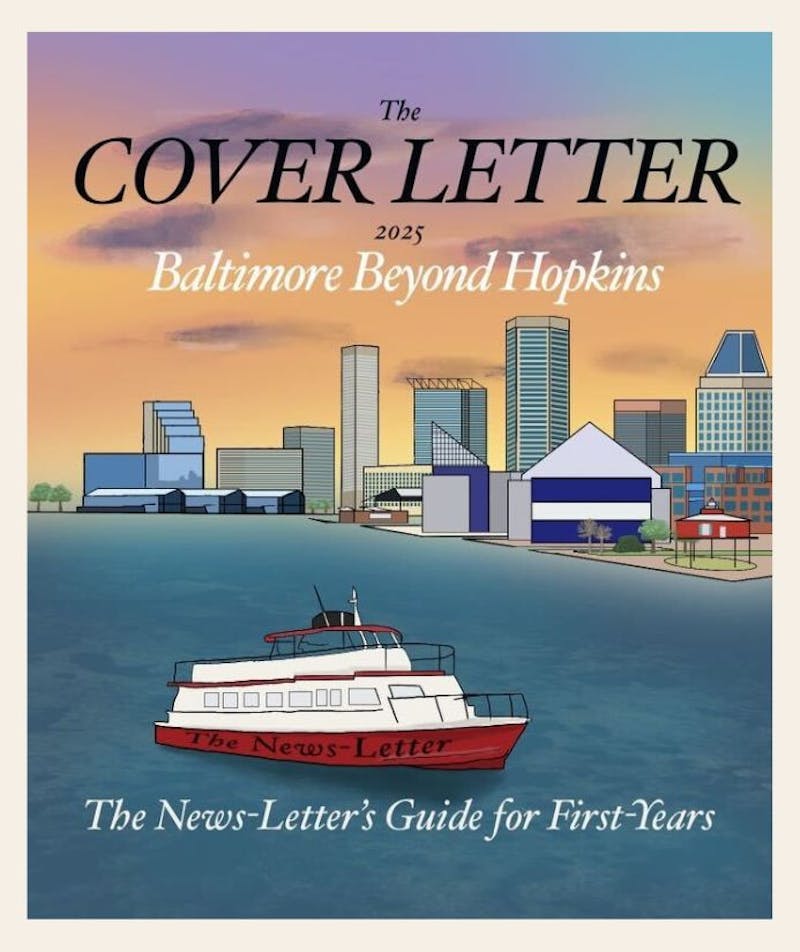A uniquely Palestinian perspective on the Middle-East conflict in Israel was portrayed through first-hand accounts and artwork by an Israeli photographer and a Palestinian filmmaker last Thursday night in the Mattin Center.
Neil Hertz, a professor of literature in the English department at Hopkins for 25 years, coordinated the event in conjunction with the Faculty for Israeli Palestinian Peace (FFIPP), hoping to raise awareness about the situation. As he said, "most Americans don't really get a very good look at what's going on, particularly in the West Bank ... [They] learn about what's going on between Jews and Arabs in the Middle East from mostly sources sympathetic to the policies of the state of Israel."
While waiting for the artists to arrive, Hertz gave his perspective on the conflict during a trip he took with the FFIPP. He described an abandoned village outside of Nazareth, overgrown into a mature forest, with an unkempt and nearly unrecognizable cemetery. The reason the cemetery was in shambles, he explained, was because the Palestinian settlers had been moved inside the city and were no longer allowed to leave.
His response to this situation was that "there are reasons for many of Israeli state policies. There are reasons why you would not want suicide bombers to get into your community ... But what earthly reason could you have for keeping people from tending a cemetery?"
A similar outcry was felt in the artwork featured by Esti Tsal, an Israeli woman who has been a peace activist for many years and is an active member in Machsom Watch, an organization of Israeli women who monitor the Israeli Defense Forces at checkpoints for Palestinians in the West Bank.
Tsal's photographs displayed scenes of violence and terror as Palestinians attempted to cross various checkpoints in Israel.
One photograph entitled "Checking an ID and a pointed gun" featured a mother and son holding each other as they waited at gunpoint to pass through the Beit Iba checkpoint.
Another pictured two men walking away from the camera. One of the men, a soldier, had an arm leaning over the other's shoulder which, in any other situation would seem like a sign of jovial friendship, except for the pair of handcuffs tying the civilian's hands behind his back. This picture, called "Handcuffed, led by a soldier" was captured at Huwwara Checkpoint.
Tsal further played with irony in another photograph at the Beit Iba Checkpoint, called "God and Men's Hands" This had an unmistakable resemblance to Michelangelo's "The Creation of Adam" in the Sistine Chapel. It showed one hand reaching out to another, handing it a slip of paper, implying the near-godly power of the checkpoints in the lives of Palestinians living in Israel.
In Tsal's opinion, "once you see you cannot stop seeing." She takes the pictures because "it doesn't leave you."
Rima Essa, a Palestinian cinematographer, director and producer in Israel, was the second speaker of the evening. She was the first Palestinian graduate of the Sam Spiegel Film School in Jerusalem and has had many of her documentaries widely shown at film festivals.
She introduced herself as "a second-class citizen" whose voice inside Israel is mute and whose voting rights are nominal. She spoke of her struggle to create a documentary about children with leukemia.
Essa explained, "I cannot have a press card unless I am making a film about butterflies. And there are no butterflies in the West Bank." She therefore faced constant heckling by police in the area.
After some brief technical difficulties, the audience viewed her documentary, called The Garbage Cage, which revealed the lives of Palestinians who are forced to dig for iron in garbage dumps at very young ages to make a living.
The abject poverty was evident when a boy too young to go to school was forced into long hours of manual labor simply to help his family get by. Another boy had to drop out of school to aid his family. His only response to his situation was, "I want to go to school; I have a good average."
After hearing the hopelessness of "the garbage people" and their lives, the documentary ended in silence. Not a single audience member moved or clapped. Later, freshman Sam Jockel described it, saying, "it was really powerful. I didn't really have a sense of what was going on until I saw the young boy at the garbage dump."
After the documentary aired, both artists opened the panel up for questions. One woman, Larne Berk, voiced her willingness to aid in the situation, saying, "We have made human beings - loving, democratic, sensitive people - barbarians, and Arabs are not barbarians," and suggested a Marshall Plan-like arrangement could help.
Essa replied with, "there is no hope ... it's like making a profit on the conflict." She followed with, "I know when I come back I will deal with these things." Continuing, she said "I do not feel like an artist, that I'm making documentaries, because it's like a business-it's not like being an artist."
After much prompting from the audience, Essa did not change her opinion, Berk asked her "shall we try nothing?" in disbelief, to which Essa only nodded her head.
"I'm hopeless too, but I don't say it out loud, because then what?" Tsal asked after the event in response to Essa's unexpected comments.
"I don't really think she feels that way ... I don't know whether it's to charge us even more, I mean why cry if there is no hope?" Berk asked.
Senior Salmah Rizvi felt "it was a great event ... I think that there has to be more awareness on this campus, especially about the Israeli-Palestinian conflict on either side."


